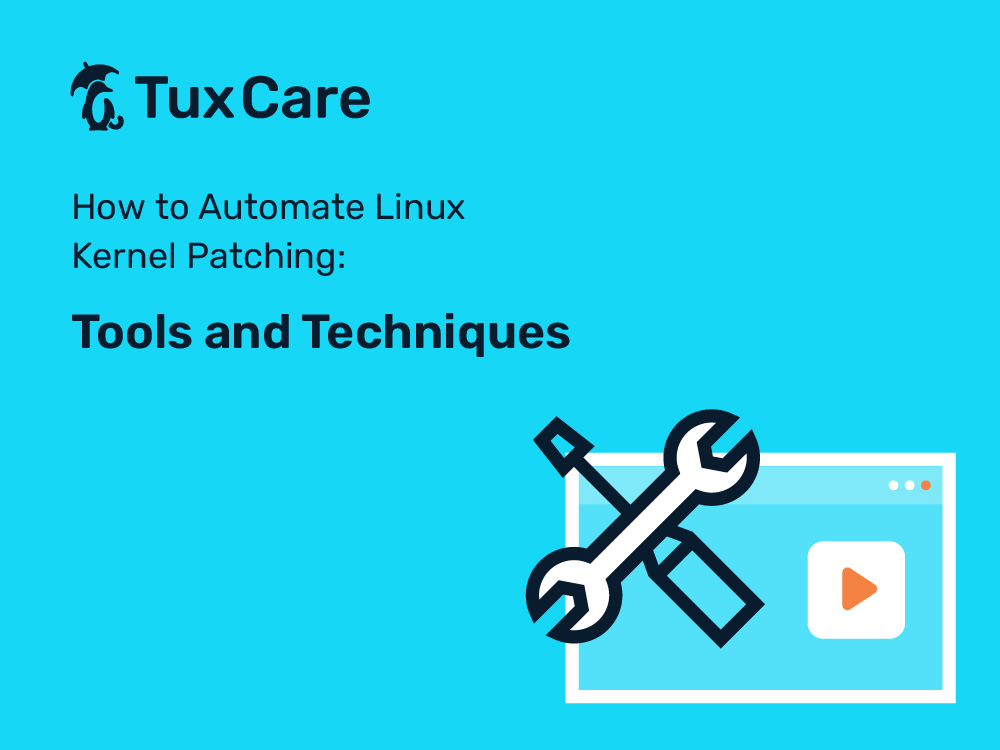How to Automate Linux Kernel Patching: Tools and Techniques
Linux kernel patching means applying security updates to the kernel to address known vulnerabilities. As the kernel is a core component of Linux, it is essential to maintain a secure kernel for the stability and security of Linux-based systems. Unpatched kernels can put the systems at significant risk, with potential security breaches and data loss.
However, manually applying patches to the kernel is not everyone’s cup of tea. It requires in-depth technical knowledge, which makes it challenging and consumes a lot of time to patch the system.
This is why many organizations have shifted to automated solutions. Automated kernel patching tools take care of all hurdles by automatically applying patches to the kernel. Since there is no need to create a patch file manually, it reduces the chance of human errors and the time required for patching.
This blog post will discuss how to automate Linux kernel patching with the best tools that offer live patching capabilities to maintain a secure Linux environment.
Tools for Automated Linux Kernel Patching
Automated patching tools streamline the patch management process, eliminating the need for complex manual procedures. The following tools are available for automated Linux kernel patching:
- KernelCare Enterprise
- Oracle’s Ksplice
- Canonical’s Livepatch
- SUSE’s Kgraft
All these tools offer live patching services, which take everything a step further by eliminating the need for a reboot, which is a frequent headache for Linux system administrators.
KernelCare Enterprise
KernelCare is the only tool in the above list that provides an automatic kernel patching solution for most popular Enterprise Linux distributions. These include Ubuntu, Debian, RHEL, CentOS, AlmaLinux, Oracle Linux, and many more. Its live patching approach can handle simple and complex updates to your Linux environment, even if you use multiple distros. You can customize how often you want patches to be deployed, and every update addresses all vulnerabilities in one move – so you don’t need to prioritize patching based on the level of each vulnerability’s criticality.
KernelCare Enterprise saves time and resources on regular patching processes by automating all security updates, prevents service interruption by eliminating patching-related downtime, and helps to achieve compliance more easily.
All the patches and CVEs associated with KernelCare are available at patches.kernelcare.com.
Ksplice
Ksplice is the first live patching program to be launched, first created by Jeff Arnold at MIT, which was later bought by Oracle. Hence, it is available only for Oracle Linux users having a premier subscription. Oracle Ksplice implements all the critical security patches without rebooting the kernel.
Compare KernelCare Enterprise and Ksplice
Livepatch
Livepatch is a product by Canonical that live patches the Linux kernel in an Ubuntu operating system. It automatically patches the vulnerabilities in the Linux kernel without requiring a reboot.
Compare KernelCare Enterprise and Livepatch
kGraft
kGraft is a live patching tool created for SUSE Linux Enterprise Server 12. It comes preinstalled with a 60-day free trial period. kGraft allows users to quickly apply critical security updates rather than postpone them until scheduled maintenance can be performed.
Why Does Automated Kernel Patching Matter?
System administrators and businesses who wish to maintain the security, stability, and performance of their Linux systems should consider automated Linux kernel patching for the following key advantages:
Enhanced Security
With automated patching, you can ensure that critical security vulnerabilities are quickly fixed. It helps organizations lower the risk of data breaches and unauthorized access by promptly implementing security patches.
Improved Stability
Automated patching facilitates regular kernel updates, which often include bug fixes and performance improvements. This helps to increase the compatibility and efficiency of the system, contributing to a more stable environment.
Reduced Downtime
Conventional patching methods usually require system reboots, which can cause significant downtime and service disruptions. However, patches can be applied without rebooting thanks to automated patching programs like KernelCare, Livepatch, and kGraft, which reduce downtime and maintain continuous system availability. This helps organizations avoid the productivity losses caused by frequent reboots and time-consuming maintenance operations.
Consistent Patching
With automated patching, you can make sure that all systems in your environment are consistently patched on a regular basis. This helps to avoid potential security gaps that can be caused by delayed patching in your systems.
Maintaining Compliance
Automated patching makes it easier to stay compliant with rules and standards related to vulnerability management, including CIS Controls, NIST CSF, PCI DSS, and ISO27001. Organizations can avoid legal fees and penalties associated with non-compliance by rapidly deploying patches soon after they’re made available.
Final Thoughts
Conventional Linux kernel patching comes with challenges and risks to organizations. Many organizations prefer automated kernel patching for its efficiency, reliability, and consistency to keep Linux kernels up to date while minimizing potential errors and downtime.
With the support for a wide range of Linux distributions, KernelCare Enterprise is an excellent choice for enterprise administrators seeking to apply automated and non-disruptive patches to their servers. It enables administrators to automatically apply all security updates while the systems are running, without the need for rebooting them or scheduling maintenance windows.
Learn how live patching works with KernelCare Enterprise.



 Documentation
Documentation Login
Login




